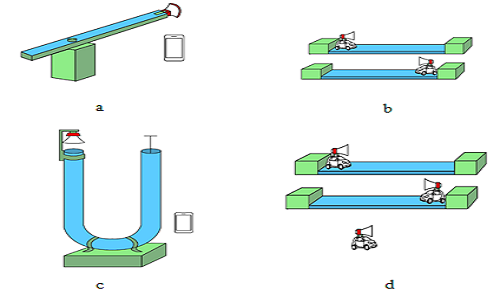
Development of Android-Assisted Sound Wave Experiment Devices as an Effort to Improve High School Students' Motivation and Physics Learning Outcomes
Abstract
Keywords
Full Text:
PDFReferences
Abdussamad, Z. (2022). Buku Metode Penelitian Kualitatif.
Arifin, F., Indrasari, W., & Rustana, C. E. (2019). Pengembangan Alat Praktikum Pelayangan Bunyi Dan Efek Doppler Berbasis Modul Mikrofon Kondenser Dan Mikrokontroler. VIII, SNF2019-PE-445–450.
Dias, M. A., Carvalho, P. S., & Ventura, D. R. (2016). How to study the Doppler effect with Audacity software. Physics Education, 51(3).
Fidiana, L., Bambang, S., & Pratiwi, D. (2012). Pembuatan dan Implementasi Modul Praktikum Fisika Berbasis Masalah untuk Meningkatkan Kemandirian Belajar Siswa Kelas XI. UPEJ (Unnes Physics Education Journal), 1(1), 38–44.
Gómez-Tejedor, J. A., Castro-Palacio, J. C., & Monsoriu, J. A. (2014). The acoustic Doppler effect applied to the study of linear motions. European Journal of Physics, 35(2).
Haisy, M. C., & Astra, I. M. (2015). Pengembangan Alat Peraga Resonansi Dan Efek Doppler Berbasis Soundcard Pc / Laptop Untuk Meningkatkan Motivasi Belajar Fisika Siswa Sma Pendahuluan SNF2015-II-87 SNF2015-II-88. IV, 87–92.
Ilhamdi, M. L., Sukib, S., & Ardhuha, J. (2020). Analisis Kesulitan Mahasiswa Dalam Kegiatan Praktikum Di Laboratorium. Jurnal Pijar Mipa, 15(2), 188–191.
Karimah, H. N., Subali, B., Handayani, L., & Natalia, E. S. (2019). Pengembangan Alat Peraga Efek Doppler.
Lenaini, I. (2021). Teknik Pengambilan Sampel Purposive Dan Snowball Sampling. Jurnal Kajian, Penelitian & Pengembangan Pendidikan Sejarah, 6(1), 33–39.
Ma, W., & Zhang, C. (2020). Doppler effect in the time-domain beamforming for rotating sound source identification. The Journal of the Acoustical Society of America, 148(1), 430–443.
Perdana, R., Subiyantoro, C., & Anggraini, L. (2019). Sikap dan Motivasi pada Mata Pelajaran Fisika. SPEKTRA : Jurnal Kajian Pendidikan Sains, 5(2), 178.
Rustana, C. E., & Indrasari, W. (2020). Rambat Bunyi Menggunakan Sensor Ultrasonik Sebagai Media Pembelajaran. IX, 33–38.
Sriyansyah, S. P., & Anwar, K. (2021). Pembelajaran Gelombang Bunyi Menggunakan Alat Musik Suling dan Gawai pada Pelajaran IPA SMP di Masa Pandemi Covid-19. Journal of Natural Science and Integration, 4(2), 175.
Suryaningtyas, A. D., Permana, H., & Wibowo, F. C. (2020). Pengembangan E-Modul Berbasis Android Dengan Metode Fodem Pada Materi Gelombang Bunyi Dan Gelombang Cahaya. IX, 169–176.
Tegeh, I. M., Jampel, I. N., & Pudjawan, K. (2015). Pengembangan Buku Ajar Model Penelitian Pengembangan dengan Model ADDIE. Seminar Nasional Riset Inovatif IV.
Tuan, H., Chin, C., & Shieh, S. (2016). The development of a questionnaire to measure students ’ motivation towards. April 2005.
Wahyu, A., Anggraeni, T., & Aminah, N. S. (2021). Eksperimentasi Time Token Arends Metode Eksperimen dan Demonstrasi Ditinjau Keterampilan Proses Sains. 11, 89–95.
DOI: http://dx.doi.org/10.31258/jes.7.4.p.598-608
Refbacks
- There are currently no refbacks.
Copyright (c) 2023 Neiny Edwana

This work is licensed under a Creative Commons Attribution 4.0 International License.
Publisher: FKIP Universitas Riau












